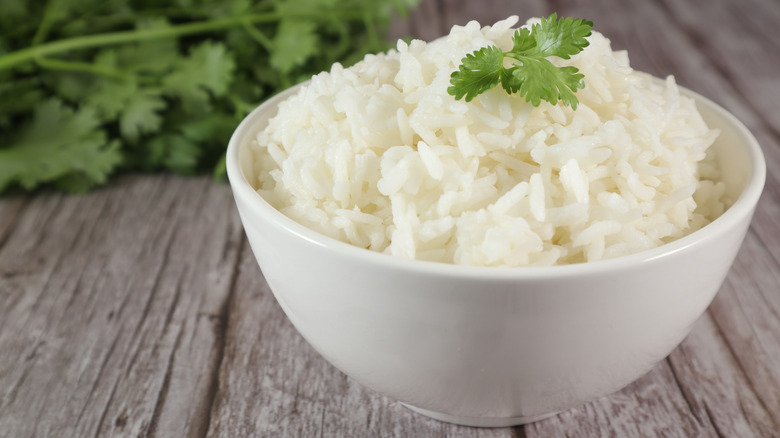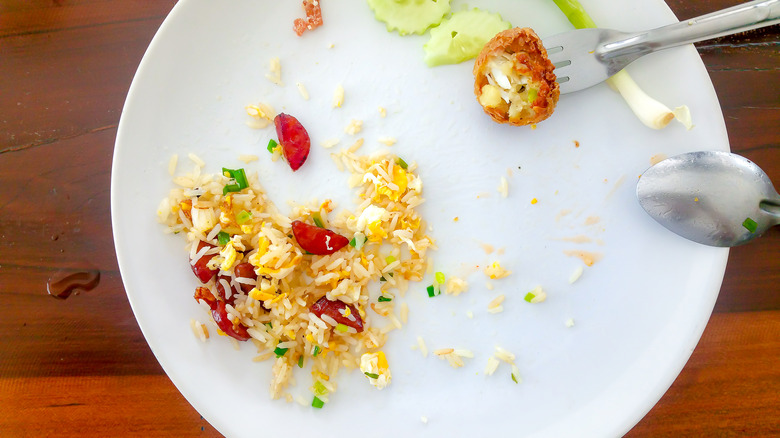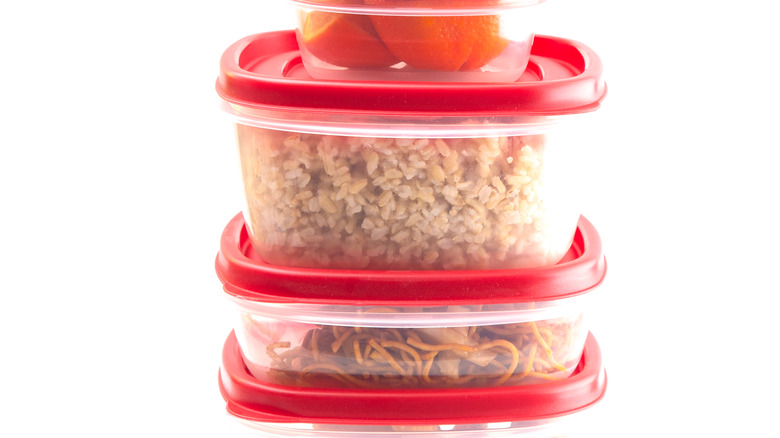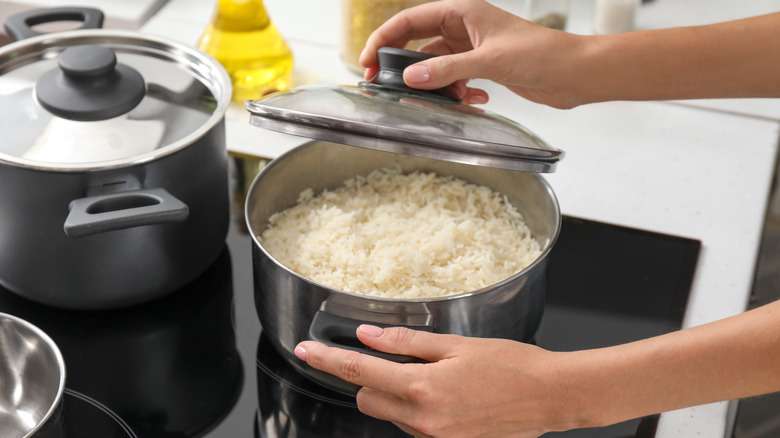Why Eating Leftover Rice Can Be Dangerous
If you've ever cooked a recipe with directions that suggest letting the dish sit before serving, it's likely because it allows the flavors to come together in a way that they hadn't immediately after the dish was prepared, per Fine Cooking. This can also be one of the best parts about eating leftovers — not only do you get to enjoy the meal twice, but it might even have a deeper flavor the second time, depending on the dish, per Forbes.
Food preparation and storage can be tricky, though, because different foods require different storage methods. Ignoring those methods or storing food improperly can lead to serious consequences. While shelf-stable foods such as nuts or some types of produce you've been storing wrong have no problem sitting out at room temperature, other foods, such as meat or seafood, need to be stored in cold temperatures.
Something you might not know, though, is that rice is another dish that can't be left out for too long. If you consume rice that has been left on a table or counter for an extended time, you could be subjecting yourself to a serious illness.
Eating leftover rice could lead to food poisoning
You might not immediately think of rice when you think about ingredients that can lead to food poisoning. However, according to the United Kingdom's NHS website, rice can harbor dangerous spores that have the potential to grow into harmful bacteria if given the chance.
Before rice is cooked, it can contain Bacillus cereus spores. Despite that plenty of bacteria are killed from high cooking temperatures, the NHS says these spores in rice are able to survive the cooking process. If rice is left out at room temperature for too long, those Bacillus cereus spores can grow into bacteria, which can cause food poisoning if ingested.
The NHS website advises that those who are preparing or consuming rice do so responsibly. A quick tip is to think of the number one when thinking about how to safely eat rice. If you can't eat it right away (which is recommended), cool it within one hour. Be sure to look out for any signs that your leftover rice has gone bad and eat it within one day. And if you plan to reheat rice, only do so one time. These small reminders could help prevent you from a foodborne illness.
How to cool and store rice properly
Though you should ideally eat rice as soon as it's done cooking, it can be hard to eat every last grain. In that case, what should you do with the leftovers?
There's a proper method for cooling and storing rice to ensure its safety and quality, according to Medical News Today. The most important thing is to make sure the rice cools quickly. "Cooling your leftovers quickly, within two hours, to refrigerator or freezer temperatures is considered safe," Mayo Clinic registered dietitian Katherine Zeratsky told USA Today.
Medical News Today recommends separating leftover rice into shallow containers; this allows it to cool off faster than piling it all together in one large food storage container. Then, immediately place it in the refrigerator or freezer if you know you're not going to eat it at the moment. Doing this immediately after cooking helps to prevent bacteria growth. If choosing to freeze the rice, dispose of the leftovers after three to four months. Though many frozen foods don't expire, the rice will lose its flavor and quality if stored for longer.
How to reheat rice safely
We get it: You don't want to throw away perfectly good leftovers. In that case, it's important to note that you can reheat rice — it just has to be done safely. According to Real Simple, you need to make sure the rice is hot as can be when you reheat it — it's imperative to heat it to least 165 degrees Fahrenheit throughout. USA Today suggests using a food thermometer to make sure your leftovers are reheated to a safe temperature.
Microwaving the rice is likely the easiest method for reheating. Real Simple suggests heating the rice in a microwave-safe container, paired with 1-2 tablespoons of water for every cup of rice. This allows the rice to steam, which both helps it to cook thoroughly and prevents it from drying out. Other preparation methods include steaming rice in a pot on the stove until it's thoroughly cooked or stirring it in oil to heat it through.
Once the rice is cooked, serve it immediately — the same way you would if it were freshly prepared.



